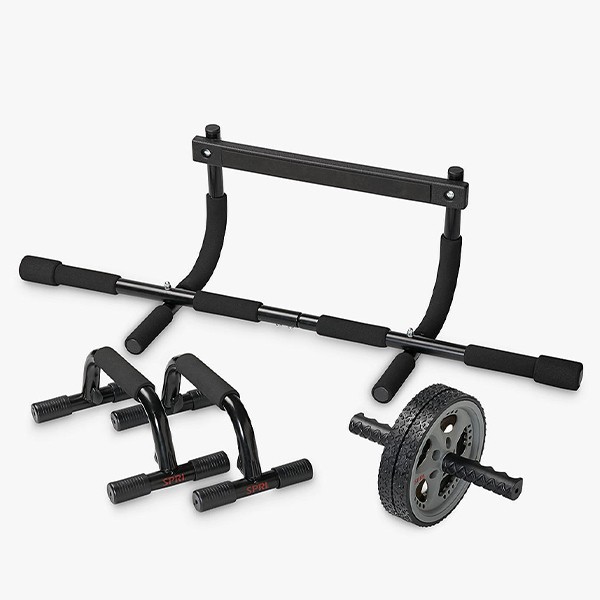How Often Should You Switch Up Your Training Routine?
Set A Goal
“Having a goal to work towards with your training will keep you focused. It will also allow you to measure your progress and know for sure you’re doing the right things. Once you’ve got your long-term goal in place, sketch out some smaller, short-term goals which you can tick off as you progress to your long-term goal. For example, if your ultimate goal is to run a marathon, your short-term goal could be to achieve a half marathon PB, run 20 miles without walking, or training to keep your heart rate lower at a faster pace. Focus is important – it’s far more satisfying to excel in one area than being mediocre in several.” – Alex Parren, PT
Know The Signs
“The biggest giveaways that you need to refresh your training plan include a stalling of results, boredom of going to the gym and a struggle to improve performance. If you notice any of these things, it’s time to mix things up. Remember your workouts should always challenge your body and you should continue to see results. Different training styles allow your body to push past barriers and set new PBs.” – Andy McLelland, PT, Body Society
Aim For Variety...
“When it comes to developing a training plan, variety is key, and ideally, every workout should be different. For the general fitness goer, the more varied your workouts, the better, as this keeps your body constantly guessing. The belief you have to do the same workout every session and progressively overload for six weeks is out-dated. If, however, you have specific goals you want to achieve, then yes – incorporate those elements into the majority of workouts – but mix up everything else around it. For example, if you want to build bigger back muscles, you could do one workout per week that focuses on super-setting back muscles to really build, but then you could do a swim session – front crawl is great for defining the back – and a HIIT workout that includes a few movements targeting the back, such as renegade rows and chin-ups.” – Andy
…But Maintain Focus
“When it comes to mixing up your training, it’s important to listen to your body but also your head – if you start to find training a chore and mentally draining, it’s time to re-think your approach. Try to maintain some form of focus. For example, if you’re primarily a weightlifter, try adding some functional fitness to your weekly regime, such as calisthenics, or using different equipment like resistance bands and a skipping rope to keep things fresh. If you’re a keen runner, switch things up by throwing in some intervals, or hit the trails instead of the road. Whatever your approach, include a ‘de-load’ week every four weeks to give your muscles the chance to recover.” – Alex
Always Include Strength & Cardio
“The ideal training block contains strength and endurance training – these should always sit side-by-side. At Body Society, we have five training pillars – lifting, HIIT, boxing, climbing and stretching – and encourage clients to rotate through these pillars. While your personal goals should dictate how much of one training style you do, all should be part of a balanced programme. By varying your workouts, not only do you bring the greatest benefits in terms of health and aesthetics, but also reduce the risk of injury due to overtraining.” – Andy
Don’t Get Complacent
“If you’ve been following a specific regime for a few weeks and want to change it to another goal completely, you need to take things back to the start. Just because you can now lift 60kg, say, that doesn’t mean you’ll be able to sprint 100m in ten seconds – these are completely different demands on your body, so you’ll need to build up slowly. Also, be aware that if you have been working on a strength phase and switch to a stamina focus, your body will realise it doesn’t need to spend all the energy and effort on maintaining large muscles that now aren’t used to the same extent, so it will start to break down muscle it no longer needs. Remember changing your regime is hard on your body – listen to it, it will tell you when you’ve done too much, and plan your workouts accordingly.” – Andy
Get Your Timings Right
“The ideal block of training will depend entirely on your goals and what you’re training towards. If you’re a runner training for a marathon, the typical block will be a couple of months building a strong aerobic base, followed by a 16-week block working towards your goal race pace. This training block will include tempo runs to build speed, easy runs to develop endurance, and a long run to practise time on your feet as well as perfecting nutrition and hydration strategies. If, however, you’re a weightlifter, a great way to design your training blocks is with periodisation. Periodisation, put simply, means carefully planning your training and progressing slowly from one phase to the next to avoid injury and overtraining. In weightlifting, this will most likely look like a 12-week block.” – Alex
Prioritise Recovery
“Regardless of whether you’re just starting out on your fitness journey or a pro, recovery is always important. In fact, training is only one part of the process of fitness – sleep, hydration, nutrition and rest are just as important as the training itself. Make sure to include plenty of recovery and stretching within your routine and get a minimum of seven to nine hours of quality sleep each night. Also remember alcohol will hinder your progress – limit consumption and stay well hydrated.” – Alex
Boost your training with this SLMan-approved kit…






*DISCLAIMER: Features published by SLMan are not intended to treat, diagnose, cure or prevent any disease. Always seek the advice of your GP or another qualified healthcare provider for any questions you have regarding a medical condition, and before undertaking any diet, exercise or other health-related programme.
DISCLAIMER: We endeavour to always credit the correct original source of every image we use. If you think a credit may be incorrect, please contact us at [email protected].


